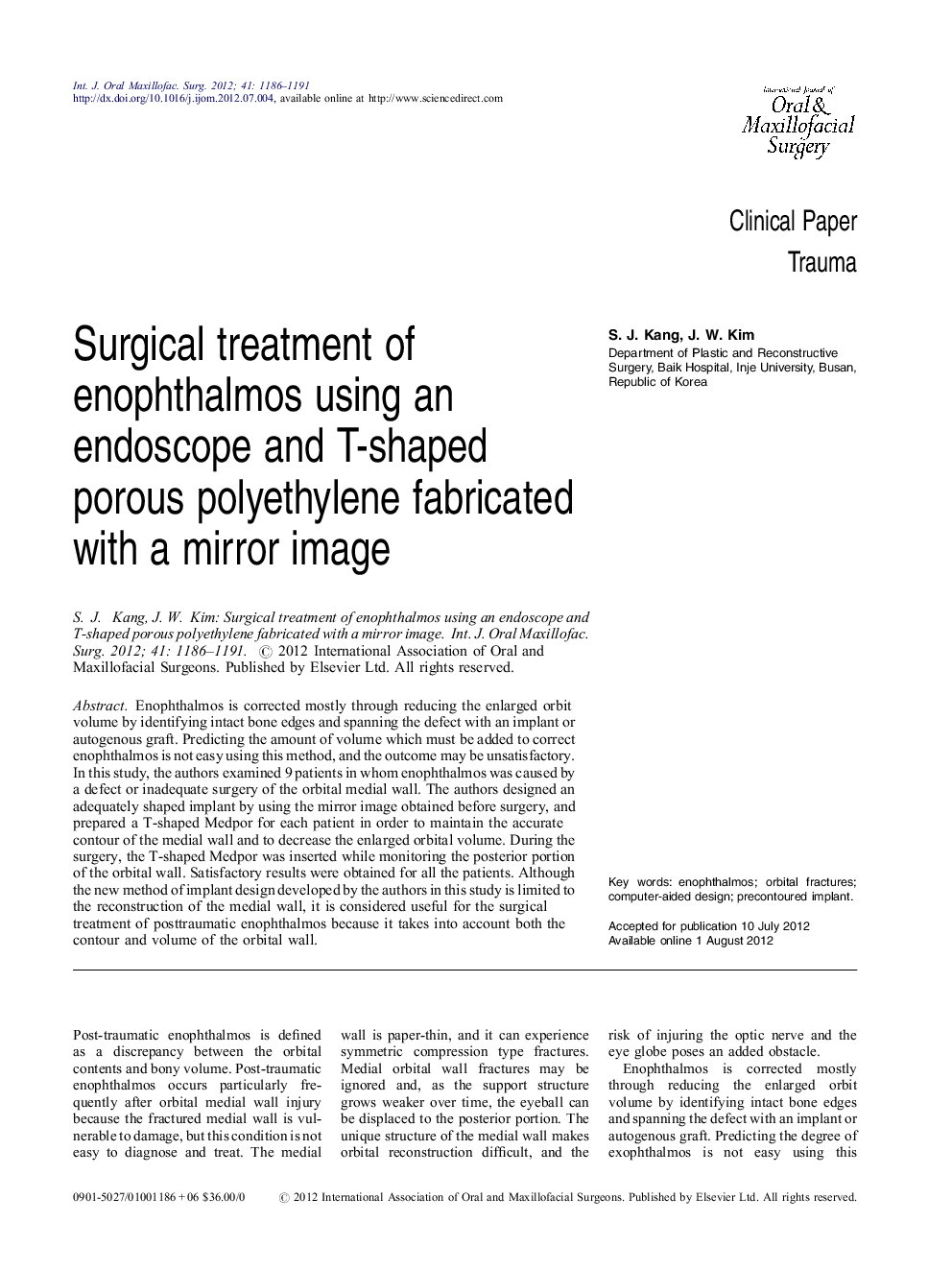| Article ID | Journal | Published Year | Pages | File Type |
|---|---|---|---|---|
| 3133022 | International Journal of Oral and Maxillofacial Surgery | 2012 | 6 Pages |
Enophthalmos is corrected mostly through reducing the enlarged orbit volume by identifying intact bone edges and spanning the defect with an implant or autogenous graft. Predicting the amount of volume which must be added to correct enophthalmos is not easy using this method, and the outcome may be unsatisfactory. In this study, the authors examined 9 patients in whom enophthalmos was caused by a defect or inadequate surgery of the orbital medial wall. The authors designed an adequately shaped implant by using the mirror image obtained before surgery, and prepared a T-shaped Medpor for each patient in order to maintain the accurate contour of the medial wall and to decrease the enlarged orbital volume. During the surgery, the T-shaped Medpor was inserted while monitoring the posterior portion of the orbital wall. Satisfactory results were obtained for all the patients. Although the new method of implant design developed by the authors in this study is limited to the reconstruction of the medial wall, it is considered useful for the surgical treatment of posttraumatic enophthalmos because it takes into account both the contour and volume of the orbital wall.
